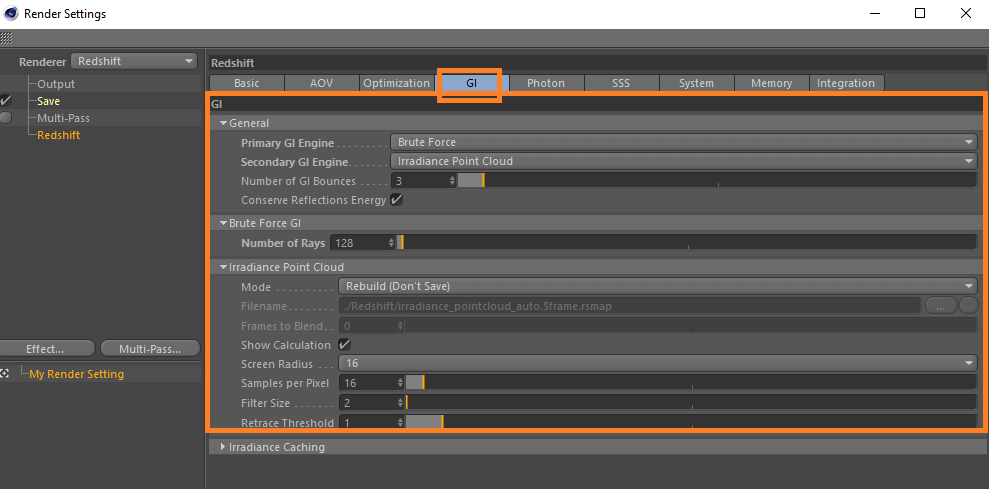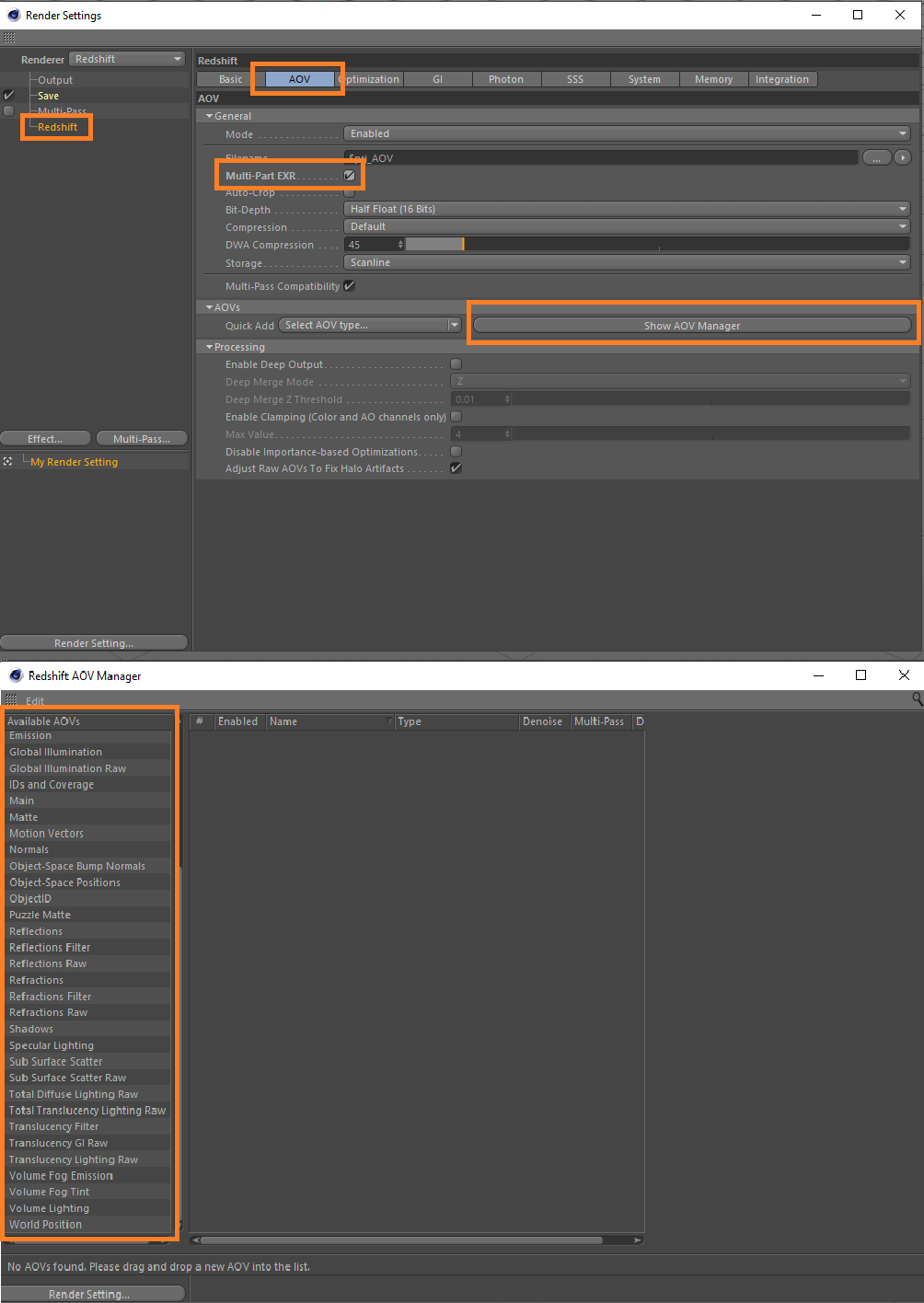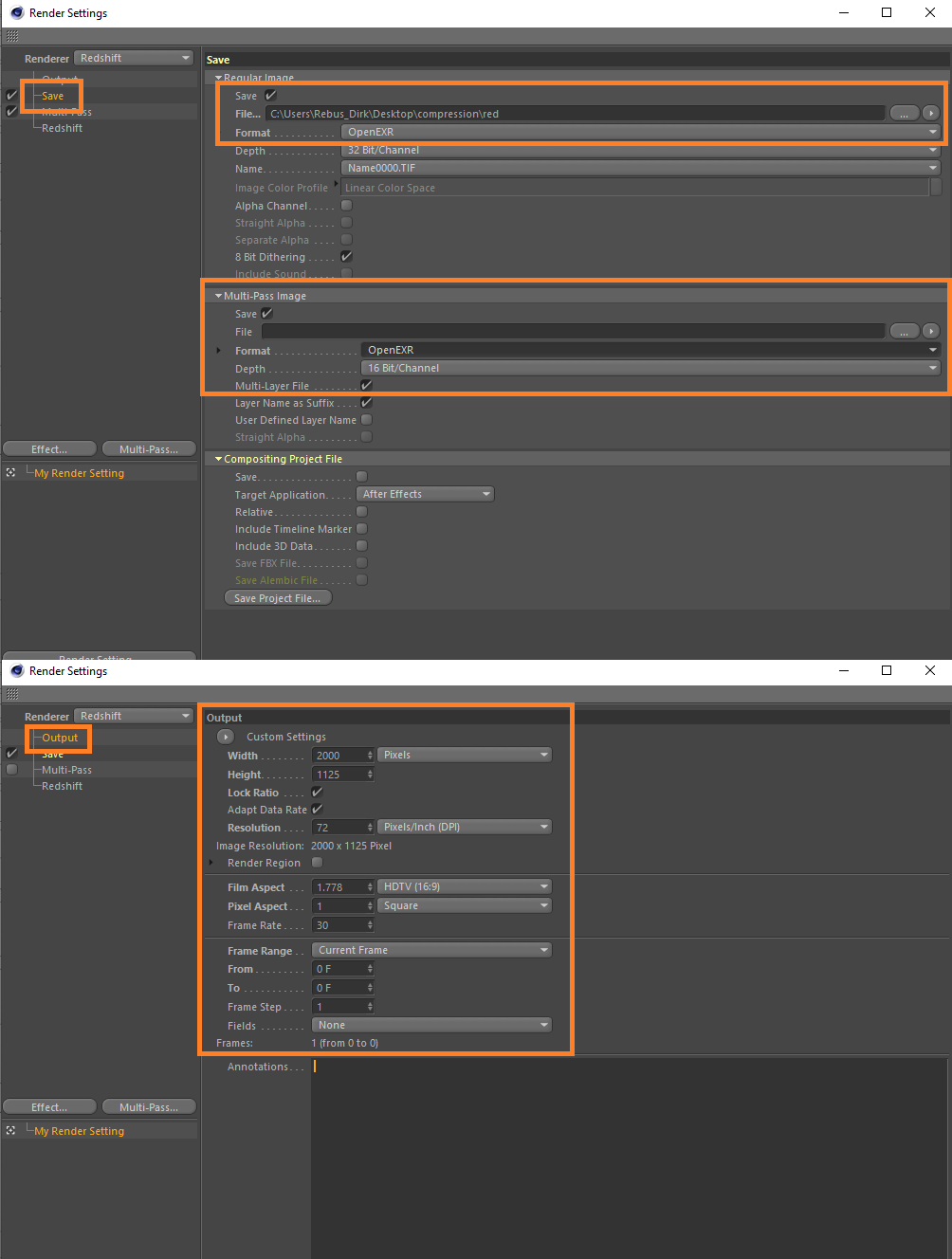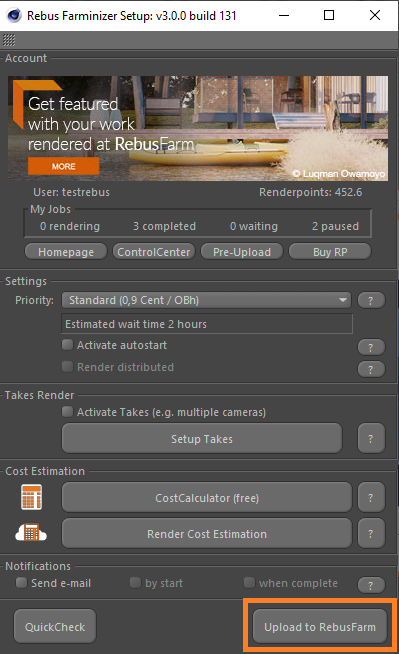How to submit a job using Cinema 4D and Redshift Renderer
Open your scene in Cinema 4D with Redshift Renderer and open the Cinema 4D render settings to prepare your scene to be rendered online.
Please navigate to the Redshift Cinema 4D render settings. Under the 'GI' tab configure the Redshift settings to remove any noise on the image.

Go to the 'AOV' tab in the Redshift render settings.

Activate the 'Multi-Pass EXR' option to render all the passes in a single file online.
Now you open the Redshift AOV manager.
In the Redshift AOV manager, add all the passes you need.
Now please navigate to the 'Save' tab in the Cinema 4D render settings.

Please define a save path for the regular image by clicking on the '...' button.
Set a name and save path for your results and then click on 'Save'.
Also please set a name and a save path for your multipass image.
In order to get the multipass image, please set 'OpenEXR' as output format.
To upload your job to the render cloud please close the Cinema 4D render setup and open the RebusFarm setup window via the RebusFarm tab or press Ctrl+shift+F on your keyboard.

Please refer to 'Cinema 4D Job Submission' for more detailed information about each of the options of the RebusFarm setup window.

After you configured your RebusFarm settings, please click on the button 'Upload to RebusFarm' at the bottom of the RebusFarm setup window.
Before uploading the job to the render cloud, a new window will open for RebusFarm messages. It shows all relevant information, warnings, and errors your scene may have.

If you don’t get an error message, please proceed by clicking on 'Send to RebusFarm'.
The Rebus Farminizer will upload your render job including all the assets required for rendering. You can check the progress of the upload and rendering by visiting the ControlCenter. Once the upload process is completed, the rendering process will start automatically if you activated the 'Autostart render' option before uploading. If not, you will have to start the rendering manually by clicking on the 'Start render' button in the ControlCenter. Check our 'How to use the ControlCenter' section for more details about the ControlCenter.
Once the render job is completed, your results will automatically be downloaded from the render cloud to the output save path that you set in your render configuration.
